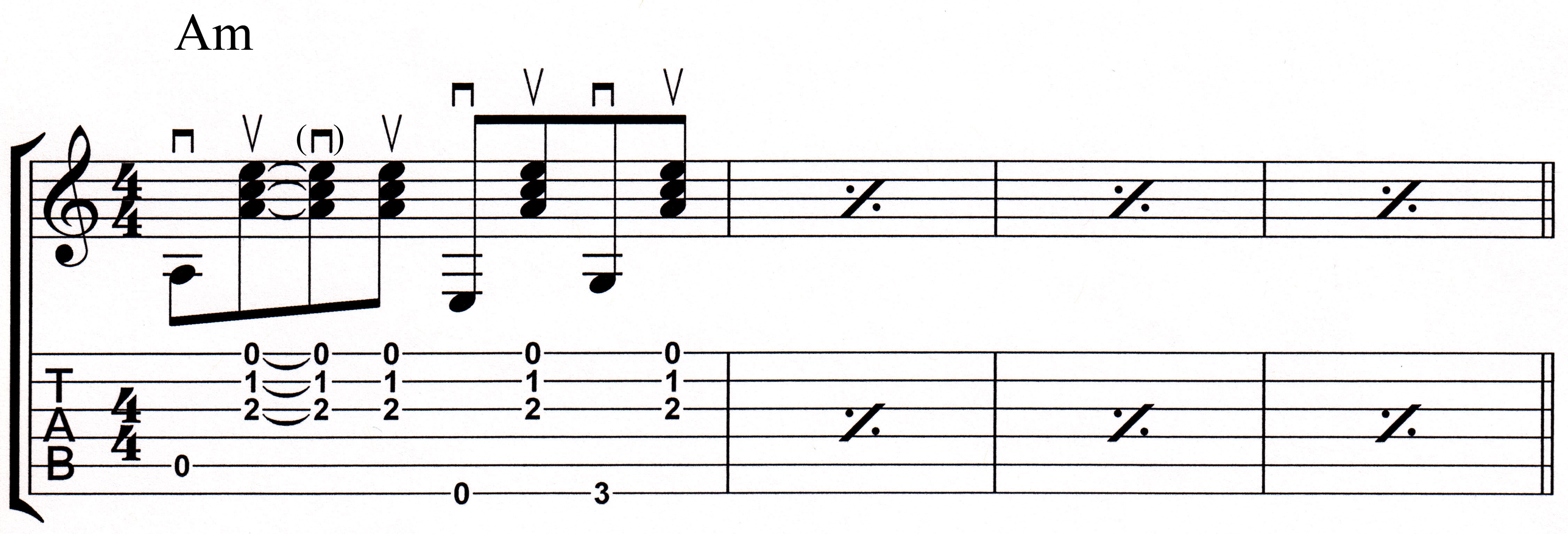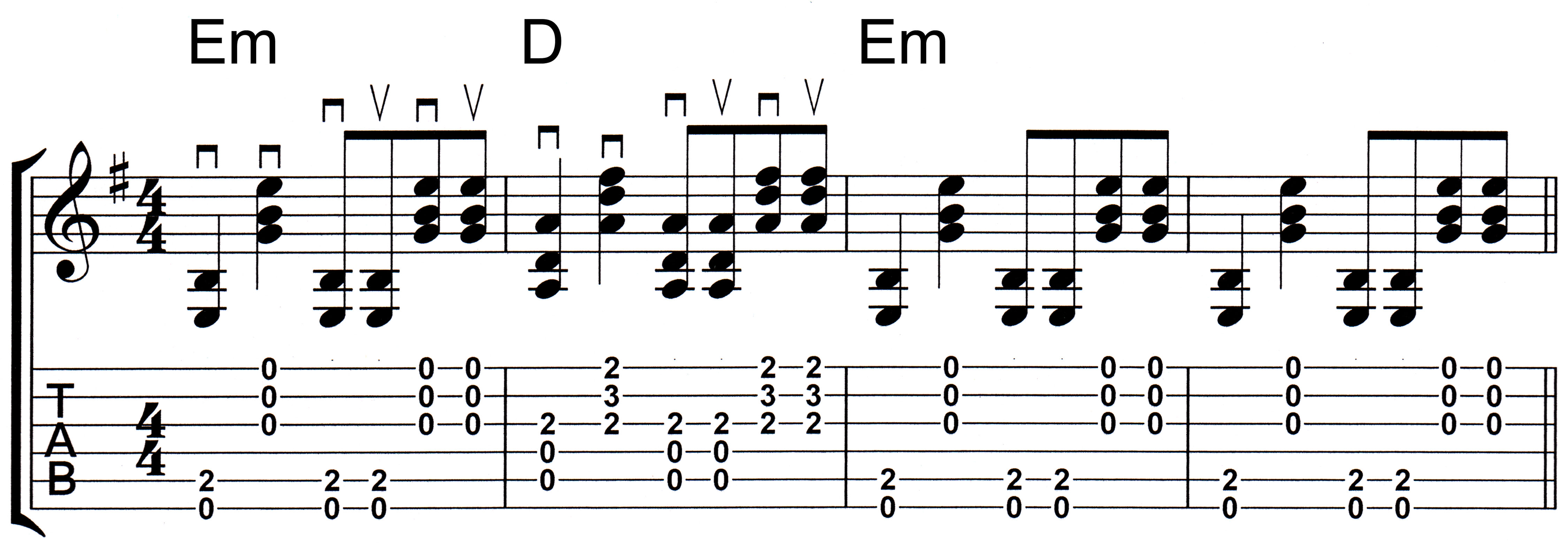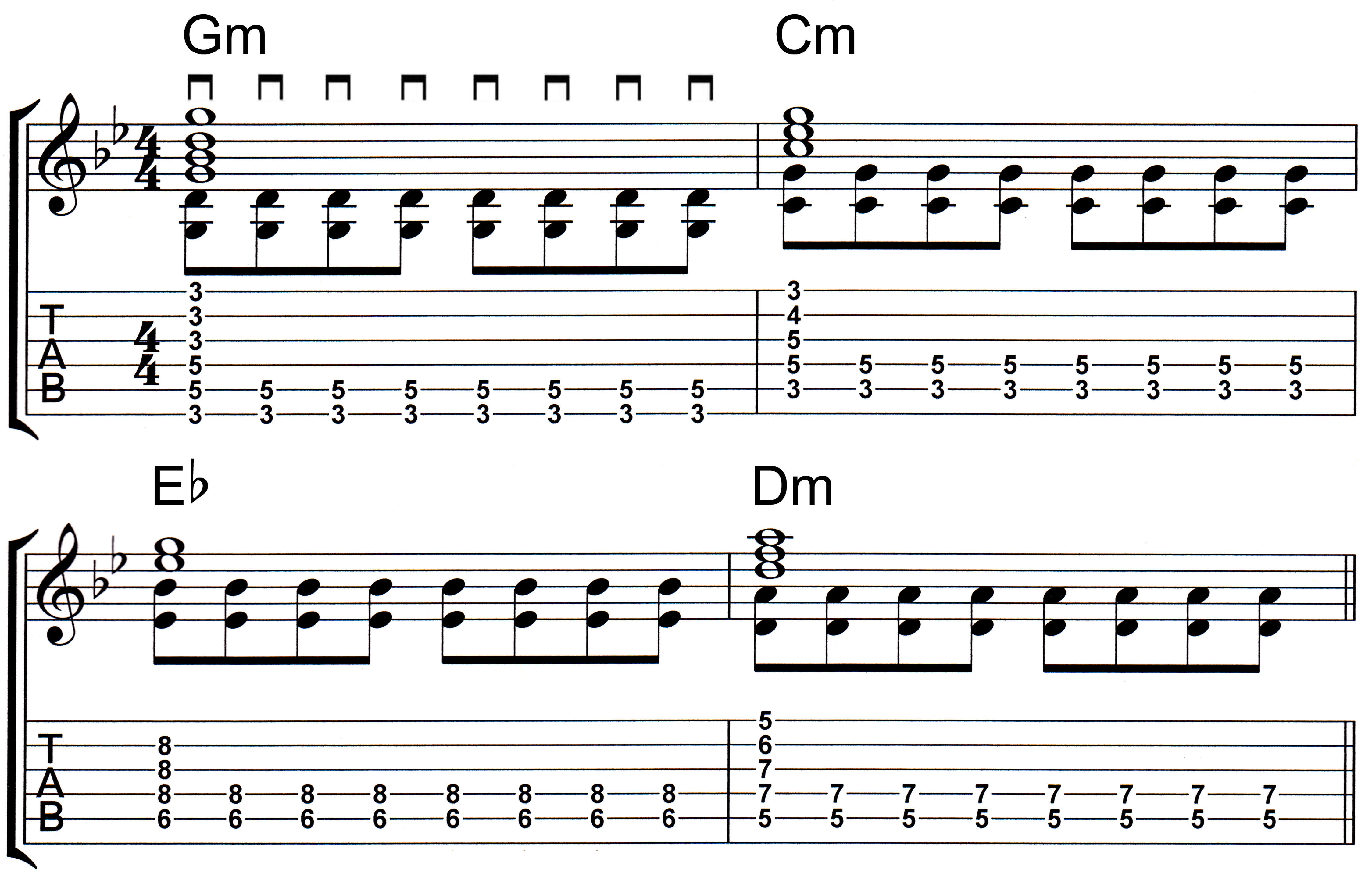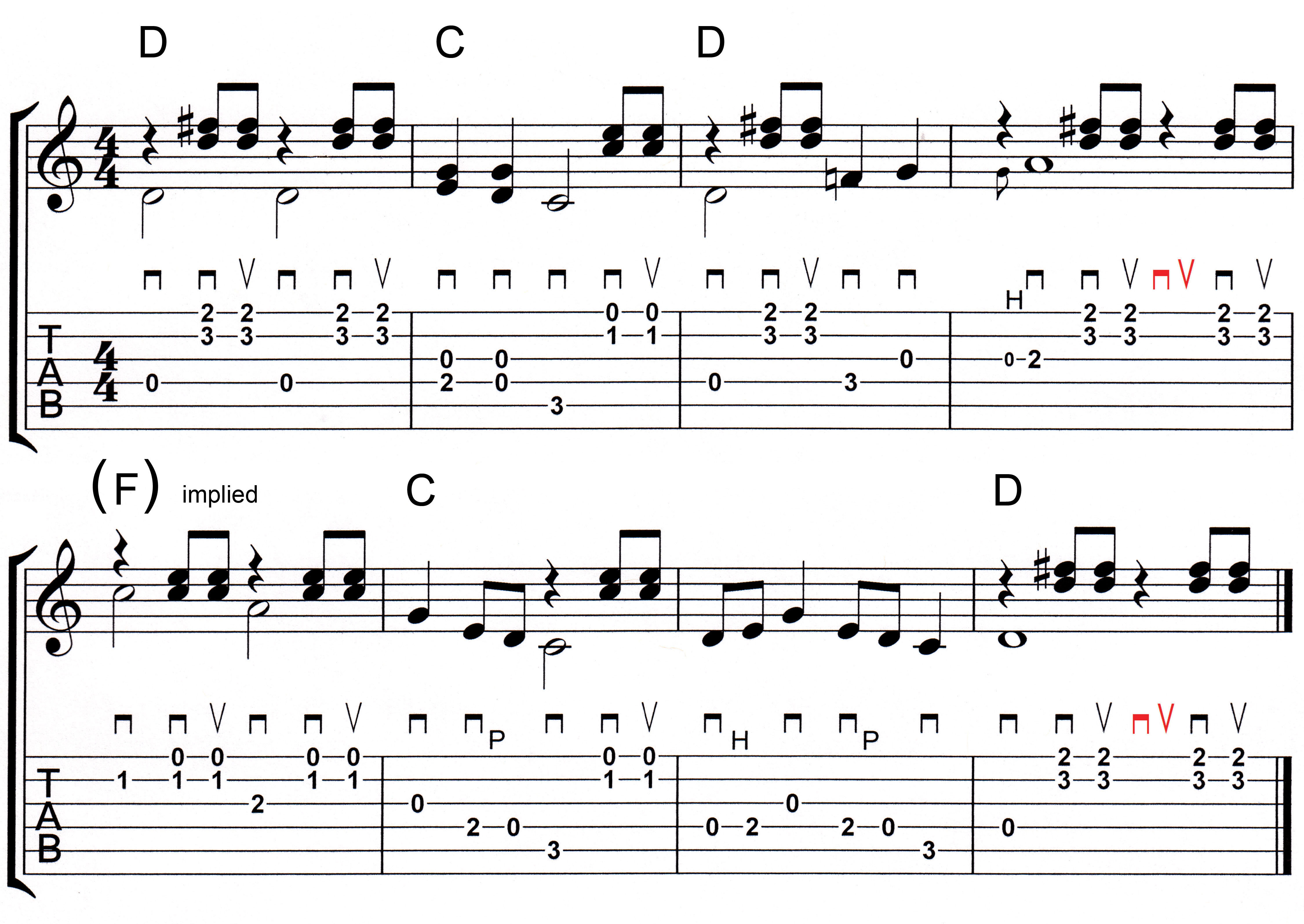
Okay, so now let's talk about something I call "zone strumming". You won't hear this described in quite the same way from other teachers, nor will they call it "zone playing" "zone strumming" or "zoning" - in the way
they explain it. But guitar players do this all the time; they just may not even be aware they are doing it.
Zone strumming/playing is simply the idea of dividing the strings into groups. For example:
The general idea is to take any given strum pattern and divide it into separate elements, alternating between bass and treble strings.
First, the intro to the song “Runaway” by Del Shannon. This demonstrates alternating bass notes as part of a strum pattern, dividing the strings into separate groups, the “one string against 3/4/5” idea:

Follow the picking directive precisely and you’ll be on your way to playing it correctly. Now, for the up strokes, simply “flick” your wrist a bit - and in steady time - to hit only the top three strings on the up stroke motion. And let everything ring out as you play it.
For the next example, we’ll cover the “2 strings against 3/4” idea using "The One I Love" from REM, the opening bit:

So what you're doing here is bouncing on the bottom two bass strings for the 1st beat, the top 3 strings for the second beat; then the bottom two strings for the 3rd beat, and back to the top three strings for the 4th beat. Follow the picking directive exactly as shown. In doing this, you are creating a level of implied complexity, without actually changing anything except the way you strum the chords.
When you apply this "zone" strumming approach, you are able to take a pretty mundane strum pattern and make it sound far more exciting than it actually would be if you just simply strummed the chords using the basic approach to the given strum pattern, which is to simply strum all the strings (muting what isn't part of the chord).
The third zone concept we'll show you is one you might already actually know. It's a bit more simplistic, but it really demonstrates how you can create space and tension at the same time.

All you are doing is strumming the whole chord on the first beat, creating the space, letting the chord ring out through the whole four beats of the measure; then you mark time in straight eighths on the root and five tones for each chord, starting on the "&" of 1. All down strokes. Now, you can add a bit more "drama" by doing a glissand on the first beat strum - which is kind of a lazy strum, as long as you get to the "&" of 1 in time to set up the tension for the rest of the measure.
This final example takes the whole zone approach to a deeper level of complexity, where it actually is complicated. The intro to "Shady Grove", an old Bluegrass tune, is our subject. You can play this on electric, but it
won't sound quite as good. So if possible, play this on an acoustic.

This will take a bit of work to get playing correctly. The notation is precise, so strive to play this exactly as written out. It will be a little sloppy at first, and that's okay. Follow the picking directive exactly as shown and you'll find it flows far better. The red down/up strokes are "ghosted", meaning you make these motions to keep your timing precise, but do not strike the strings.
We could show you tons of examples. But it's best if you experiment with this idea. Listen to songs with the intent to hear exactly what the guitar player is doing. Are they employing zone strumming techniques? How are they doing it? Count it out to learn what the strum pattern is, then what is being done, where in the strum pattern do the zone elements occur.
By playing with how you attack the strings, how you divide up the rhythmic figure of a strum, even choosing which strings to play in each bit of the strum pattern, you introduce more dynamic elements into your playing, and into the sonic character of the rhythm/strum pattern. You don't have to simply strum along. This allows you to put your twist into already existing music, and to create more interesting sounds on your own original compositions if you are a writer. And there are no functional limits on what you can do. It just has to be repeatable and sound good in the process (which is a subjective assessment, I know).
The art of rhythm playing is one that is not widely popular with most modern players. They all want to be lead guitar players. But without rhythms to back them up, they are just making a lot of noise with nothing to anchor them, nothing to guide them, nothing to create context for their melodic ideas. And unless they are Robben Ford, Mark Knopfler, Chet Atkins or other similarly rhythmically literate player, lead guitar players need rhythm players. So that makes rhythm players more valuable than lead players - because all songs require rhythm or they don't work!
Okay, that's it. Now, shut off this computer and go play, teach, gig, create, arrange and enjoy the whole process that is music... and especially guitar!